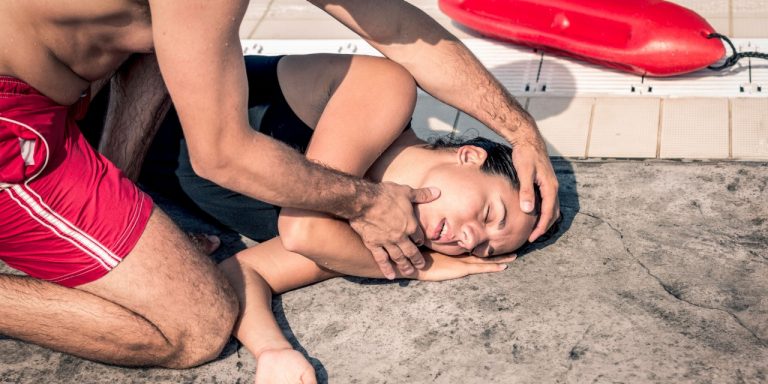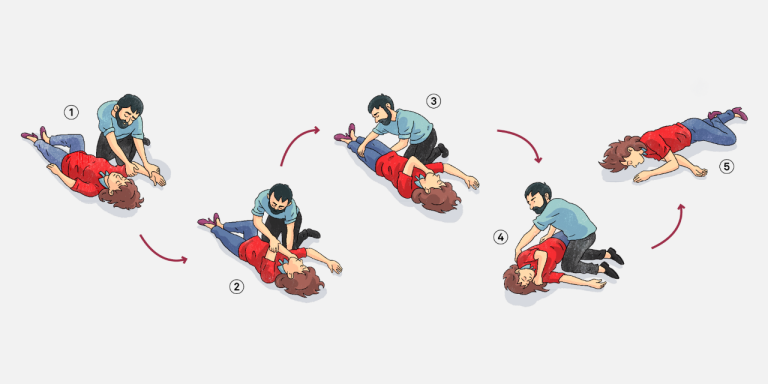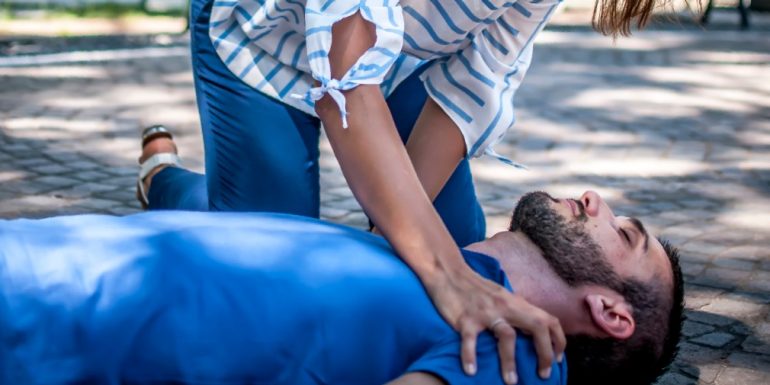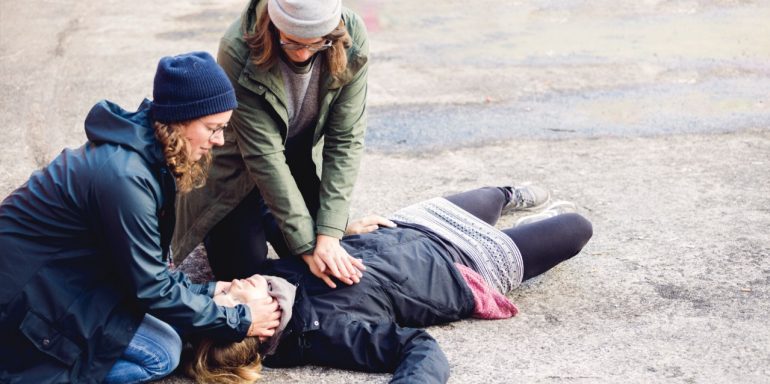
The recovery position: here’s how it works
When should you use the recovery position? When do you have to be careful? And how does the recovery position even work?
A variety of effects on the brain can cause you to lose consciousness; these include circulatory disorders, heatstroke or epileptic seizures. You should use the recovery position if a person is unconscious but breathing normally.
What does the recovery position do?
As a person loses consciousness, protective reflexes such as coughing or retching cease. In addition, stomach contents can flow back up into the oesophagus and enter the windpipe, causing the affected person to suffocate. In the recovery position, however, the airway remains clear. The mouth becomes the lowest point of the body, so vomit or blood can drain away.
When do you have to be careful?
Use the recovery position even if you suspect that an individual may have injured their back or neck. Preserving respiratory function takes priority. Ensure that the spine remains as straight as possible and that you move the affected person into the recovery position in a single movement. If possible, ask for other people’s help to do this.
As a partner of the Swiss Red Cross, Helsana is committed to ensuring that as many people as possible can perform first aid at any time. For Completa outpatient supplementary insurance customers, Helsana now covers 75% or a maximum of CHF 200 of the cost of various courses run by the Samaritans Switzerland, a Swiss Red Cross rescue organisation.
How does the recovery position work?
- Step 1: Kneel down beside the person. Extend the arm nearest to you at a right angle to their body with their palm facing up.
- Step 2: Take their other arm by the wrist and bring it across their chest.
- Step 3: Straighten the person’s legs.
- Step 4: Roll the person towards you, holding their shoulder and hip. Their abdomen is facing towards the floor and is supported on your thigh.
- Step 5: Bend the person’s upper arm and upper leg. Tilt their head backwards slightly, with their open mouth facing the floor.
Important: continue to monitor their breathing and conscious state. Watch for signs of life.

Special case: pregnant women
The recovery position can also be used for pregnant women. However, you should make sure that the woman is lying on her left-hand side. If pregnant women lie on their right-hand side, this can compress the vena cava, interrupting the return flow of venous blood to the heart and triggering circulatory problems.
Special case: babies and toddlers
In toddlers and babies, the anatomical proportions of the upper body, legs and arms are sometimes not yet sufficiently developed to keep the body stable on its side. In this situation, use the abdominal position. Place the baby or toddler on their stomach on a warm surface, for example a blanket. Turn the baby’s head to one side and tilt it slightly backwards towards the nape of the neck. Open the mouth to allow saliva or vomit to drain away.

André Roggli works as the interim head of «Education and Volunteer Management» at the Samaritans Switzerland – a rescue organisation of the Swiss Red Cross. In his position as a first aid training expert, he trains lay people from a wide variety of backgrounds. He regularly provides first aid services in organisations and at events. André Roggli gave the editorial team advice and input for this article.


Newsletter
Find out more about current health issues every month and get all the information you need about our attractive offers from all Helsana Group companies * delivered by e-mail to read whenever it suits you. Our newsletter is free of charge and you can sign up here:
We did not receive your information. Please try again later.
* The Helsana Group comprises Helsana Insurance Company Ltd, Helsana Supplementary Insurances Ltd and Helsana Accidents Ltd.